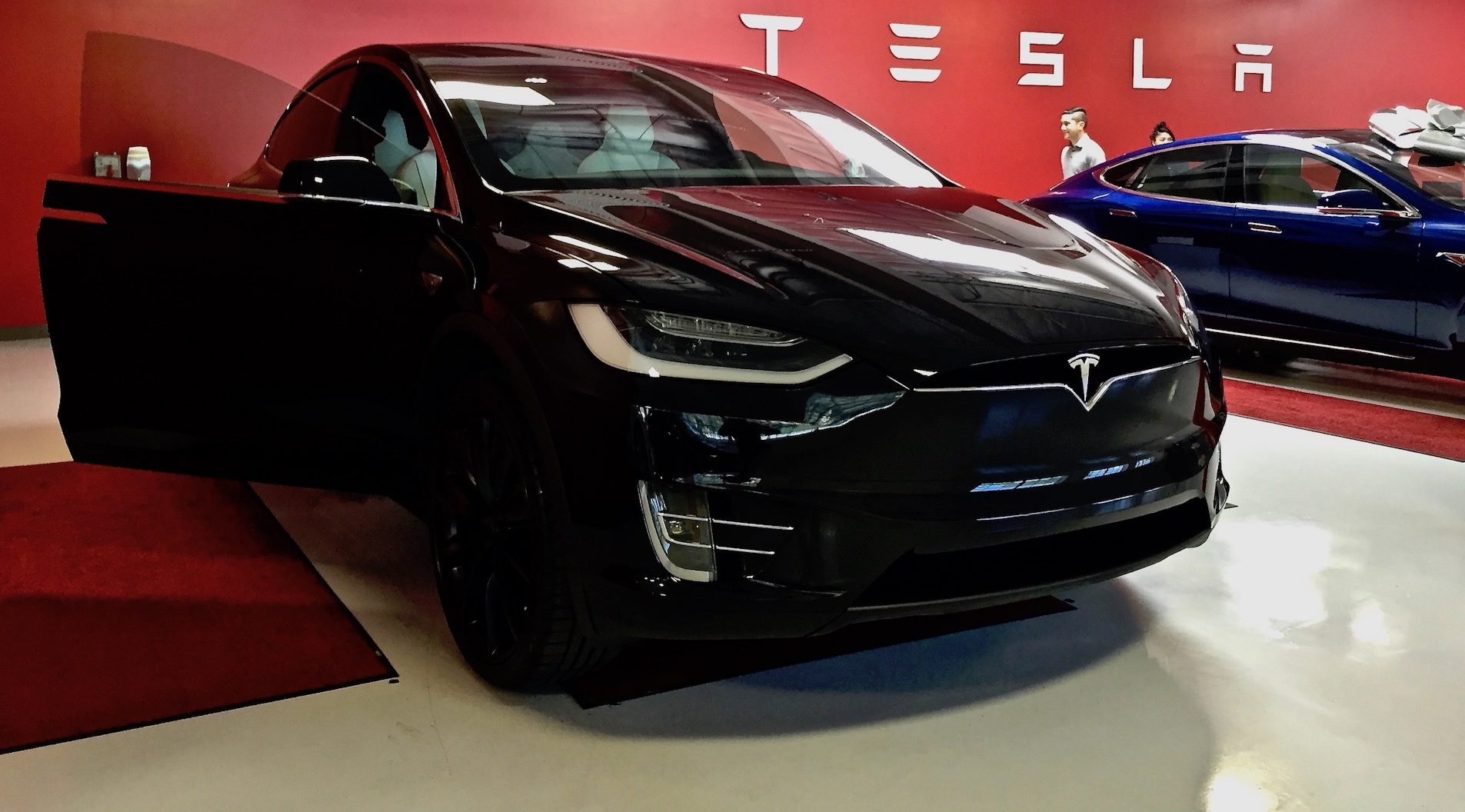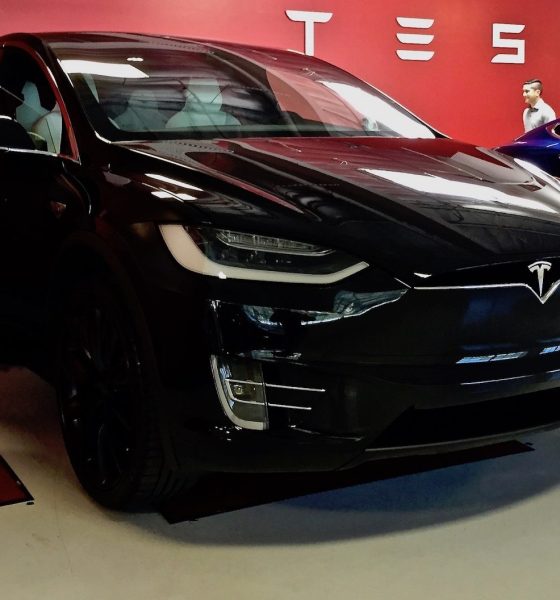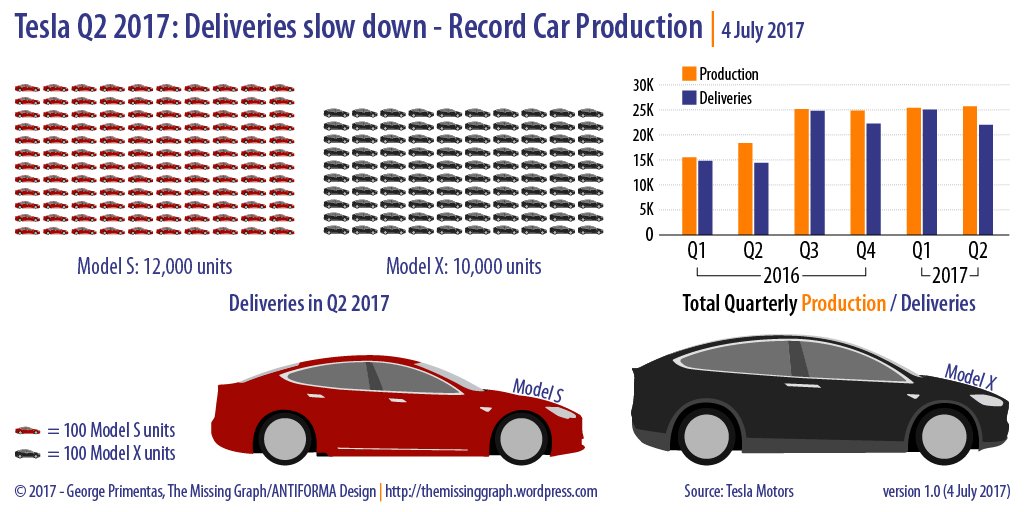

Investor's Corner
Tesla delivers 22,000 vehicles in Q2, June marks best month in history
Tesla delivered 22,000 or 25,708 Model S and Model X vehicles produced in the second quarter. Model X deliveries totaled 10,000, below last quarter’s delivery of 11,550, while deliveries of Model S’ fell to 12,000. The company does not break down production numbers of the specific vehicles. This will be the last quarterly deliveries report before the company commences Model 3 deliveries this month.
Tesla has not set a date for its Q2 financial earnings release, but it is reasonable to expect the results to drop early next month.
Until early June, production averaged about 40% below demand. Once this was resolved, June orders and deliveries were strong, ranking as one of the best in Tesla history.
Tesla began production of the Model S in June 2012, just over 5 years ago, and the Model X was put into production in September 2015. Unlike other automakers, Tesla doesn’t alter the vehicle on an annual basis, rather adding small updates to their vehicles continuously. Just this weekend, Tesla created a new seating configuration in the Model X, and in January they added the 100D battery option to the Model S and X.

Graphic: The Missing Graph, ANTIFORMA Design
This will be the last delivery report pre-Model 3. The company is expected to handover keys to the first thirty Tesla Model 3 customers at a launch party on Friday, July 28. Follow us @Teslarati to see behind the scenes coverage from the event
We’ve provided the full report from Tesla below.
Tesla Q2 2017 Vehicle Production and Deliveries
PALO ALTO, Calif., July 03, 2017 (GLOBE NEWSWIRE) — Tesla (Nasdaq:TSLA) delivered just over 22,000 vehicles in Q2, of which just over 12,000 were Model S and just over 10,000 were Model X. This represents a 53% increase over Q2 2016. Total vehicle deliveries in the first half of 2017 were approximately 47,100.
The major factor affecting Tesla’s Q2 deliveries was a severe production shortfall of 100 kWh battery packs, which are made using new technologies on new production lines. The technology challenge grows exponentially with energy density. Until early June, production averaged about 40% below demand. Once this was resolved, June orders and deliveries were strong, ranking as one of the best in Tesla history.
Provided global economic conditions do not worsen considerably, we are confident that combined deliveries of Model S and Model X in the second half of 2017 will likely exceed deliveries in the first half of 2017.
Q2 production totaled 25,708 vehicles, bringing first half 2017 production to 51,126.
We always want our customers to experience the newest versions of Model S and X while their cars are in service, so we added fully loaded, newly built cars to our service loaner fleet. We always want the service loaner Tesla to be *better* than the customer car being serviced. The customer should never suffer for something that is our fault.
We also finally added a sufficient number of Model X cars to our test drive and display fleet because our stores had been operating with far short of what was needed and, in some cases, none at all. There appears to be substantial untapped sales potential for Model X. It should also be noted that production quality and field reliability of the Model X, for which Tesla has been fairly criticized, have improved dramatically. It is now rare for a newly produced Model X to have initial quality problems.
The first certified production Model 3 that meets all regulatory requirements will be completed this week, with a handover of ~30 customer cars at our Fremont factory on July 28. More details to follow soon.
Our delivery count should be viewed as slightly conservative, as we only count a car as delivered if it is transferred to the customer and all paperwork is correct. Final numbers could vary by up to 0.5%. Tesla vehicle deliveries represent only one measure of the company’s financial performance and should not be relied on as an indicator of quarterly financial results, which depend on a variety of factors, including the cost of sales, foreign exchange movements and mix of directly leased vehicles.
For additional information, please visit ir.tesla.com.

Investor's Corner
Tesla stock closes at all-time high on heels of Robotaxi progress

Tesla stock (NASDAQ: TSLA) closed at an all-time high on Tuesday, jumping over 3 percent during the day and finishing at $489.88.
The price beats the previous record close, which was $479.86.
Shares have had a crazy year, dipping more than 40 percent from the start of the year. The stock then started to recover once again around late April, when its price started to climb back up from the low $200 level.
This week, Tesla started to climb toward its highest levels ever, as it was revealed on Sunday that the company was testing driverless Robotaxis in Austin. The spike in value pushed the company’s valuation to $1.63 trillion.
Tesla Robotaxi goes driverless as Musk confirms Safety Monitor removal testing
It is the seventh-most valuable company on the market currently, trailing Nvidia, Apple, Alphabet (Google), Microsoft, Amazon, and Meta.
Shares closed up $14.57 today, up over 3 percent.
The stock has gone through a lot this year, as previously mentioned. Shares tumbled in Q1 due to CEO Elon Musk’s involvement with the Department of Government Efficiency (DOGE), which pulled his attention away from his companies and left a major overhang on their valuations.
However, things started to rebound halfway through the year, and as the government started to phase out the $7,500 tax credit, demand spiked as consumers tried to take advantage of it.
Q3 deliveries were the highest in company history, and Tesla responded to the loss of the tax credit with the launch of the Model 3 and Model Y Standard.
Additionally, analysts have announced high expectations this week for the company on Wall Street as Robotaxi continues to be the focus. With autonomy within Tesla’s sights, things are moving in the direction of Robotaxi being a major catalyst for growth on the Street in the coming year.
Elon Musk
Tesla needs to come through on this one Robotaxi metric, analyst says
“We think the key focus from here will be how fast Tesla can scale driverless operations (including if Tesla’s approach to software/hardware allows it to scale significantly faster than competitors, as the company has argued), and on profitability.”

Tesla needs to come through on this one Robotaxi metric, Mark Delaney of Goldman Sachs says.
Tesla is in the process of rolling out its Robotaxi platform to areas outside of Austin and the California Bay Area. It has plans to launch in five additional cities, including Houston, Dallas, Miami, Las Vegas, and Phoenix.
However, the company’s expansion is not what the focus needs to be, according to Delaney. It’s the speed of deployment.
The analyst said:
“We think the key focus from here will be how fast Tesla can scale driverless operations (including if Tesla’s approach to software/hardware allows it to scale significantly faster than competitors, as the company has argued), and on profitability.”
Profitability will come as the Robotaxi fleet expands. Making that money will be dependent on when Tesla can initiate rides in more areas, giving more customers access to the program.
There are some additional things that the company needs to make happen ahead of the major Robotaxi expansion, one of those things is launching driverless rides in Austin, the first city in which it launched the program.
This week, Tesla started testing driverless Robotaxi rides in Austin, as two different Model Y units were spotted with no occupants, a huge step in the company’s plans for the ride-sharing platform.
Tesla Robotaxi goes driverless as Musk confirms Safety Monitor removal testing
CEO Elon Musk has been hoping to remove Safety Monitors from Robotaxis in Austin for several months, first mentioning the plan to have them out by the end of 2025 in September. He confirmed on Sunday that Tesla had officially removed vehicle occupants and started testing truly unsupervised rides.
Although Safety Monitors in Austin have been sitting in the passenger’s seat, they have still had the ability to override things in case of an emergency. After all, the ultimate goal was safety and avoiding any accidents or injuries.
Goldman Sachs reiterated its ‘Neutral’ rating and its $400 price target. Delaney said, “Tesla is making progress with its autonomous technology,” and recent developments make it evident that this is true.
Investor's Corner
Tesla gets bold Robotaxi prediction from Wall Street firm
Last week, Andrew Percoco took over Tesla analysis for Morgan Stanley from Adam Jonas, who covered the stock for years. Percoco seems to be less optimistic and bullish on Tesla shares, while still being fair and balanced in his analysis.

Tesla (NASDAQ: TSLA) received a bold Robotaxi prediction from Morgan Stanley, which anticipates a dramatic increase in the size of the company’s autonomous ride-hailing suite in the coming years.
Last week, Andrew Percoco took over Tesla analysis for Morgan Stanley from Adam Jonas, who covered the stock for years. Percoco seems to be less optimistic and bullish on Tesla shares, while still being fair and balanced in his analysis.
Percoco dug into the Robotaxi fleet and its expansion in the coming years in his latest note, released on Tuesday. The firm expects Tesla to increase the Robotaxi fleet size to 1,000 vehicles in 2026. However, that’s small-scale compared to what they expect from Tesla in a decade.
Tesla expands Robotaxi app access once again, this time on a global scale
By 2035, Morgan Stanley believes there will be one million Robotaxis on the road across multiple cities, a major jump and a considerable fleet size. We assume this means the fleet of vehicles Tesla will operate internally, and not including passenger-owned vehicles that could be added through software updates.
He also listed three specific catalysts that investors should pay attention to, as these will represent the company being on track to achieve its Robotaxi dreams:
- Opening Robotaxi to the public without a Safety Monitor. Timing is unclear, but it appears that Tesla is getting closer by the day.
- Improvement in safety metrics without the Safety Monitor. Tesla’s ability to improve its safety metrics as it scales miles driven without the Safety Monitor is imperative as it looks to scale in new states and cities in 2026.
- Cybercab start of production, targeted for April 2026. Tesla’s Cybercab is a purpose-built vehicle (no steering wheel or pedals, only two seats) that is expected to be produced through its state-of-the-art unboxed manufacturing process, offering further cost reductions and thus accelerating adoption over time.
Robotaxi stands to be one of Tesla’s most significant revenue contributors, especially as the company plans to continue expanding its ride-hailing service across the world in the coming years.
Its current deployment strategy is controlled and conservative to avoid any drastic and potentially program-ruining incidents.
So far, the program, which is active in Austin and the California Bay Area, has been widely successful.








